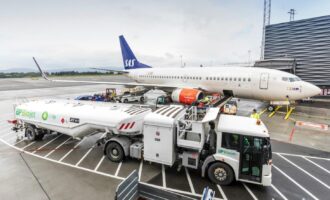New ISO standards expected to improve the quality of marine fuels
By Aaron Stone
The marine industry has been somewhat sluggish in the adoption of best practice for fuels, delivering quality that is lower than the International Organization for Standardization (ISO) would like in some regions. In parts of Europe and North America fuel usage remains consistent with ISO 8217:2010 specifications. In Asia, the earlier ISO 8217:2005 specification remains prevalent.
To counter slow growth, ISO announced the release of a new global specification for marine fuels on 21 March of this year. ISO 8217:2017, the 6th iteration of ISO 8217, will cancel and replace the previous standard. An updated specification is long overdue, the previous iteration having been released in 2012, and with it comes expectation of an acceleration in the quality of marine fuels.
“Increasing demands of environmental legislation are leading to a transition in the nature of marine fuels,” says Monique Vermeire, Chevron fuels technologist and convener of the ISO 8217 working group responsible for the new standard. Vermeire asserts that adopting the latest revisions will not only assist efforts to curb marine air pollution, but will provide improved protection against operability concerns, and put to rest misunderstandings of the intent of the previous standard. The introduction of “DF” grades will also improve fuel availability in some ports, she says.
ISO 8217:2017, which defines fuel requirements for use in marine diesel engines and boilers prior to conventional onboard treatments, includes several amendments to the scope and general requirements of the ISO 8217 specification. The scope has been expanded to recognise the contribution of alternative sources and renewables.
The scope now allows not only hydrocarbons derived from fossil-based crude oil, but also oil sands and shale, hydrocarbons from synthetic or renewable sources such as Hydrotreated Vegetable Oil (HVO), Gas to Liquid (GTL) or Biomass to Liquid (BTL), and co-processing of renewable feedstocks. In practice these renewable hydrocarbons are “indistinguishable from petroleum hydrocarbons,” declares Vermeire. Blends of the above with a FAME component are now permitted for specific grades.
 These changes address the “evolving composition of fuels” and highlight“ considerable positive experience” with renewable hydrocarbons in other transportation sectors, says Vermeire.
These changes address the “evolving composition of fuels” and highlight“ considerable positive experience” with renewable hydrocarbons in other transportation sectors, says Vermeire.
The introduction of additional “DF” grades, to enable further use of automotive diesel in the marine distillates pool, is a notable revision in ISO 8217:2017 general requirements (clause 5). DFA, DFZ and DFB will allow up to 7% Fatty Acid Methyl Ester (FAME) content by volume, a substance previously considered a contaminant in all marine fuels. Currently, 7% of volume is legislated in many countries as the maximum FAME content in diesel fuel, and Vermeire believes the new grades will enhance fuel oil availability in ports where complying with a 0.10% suphur limit in shipping fuels is problematic.
FAME will remain a contaminant in distillate grades DMA, DMB, DMZ, however the indicated “de minimis” limit, or tolerance level, has been increased from approximately 0.10% to approximately 0.50% by volume. While this may seem to some like a step backwards, the limit remains low enough to prevent intentional blending of FAME into marine fuel. Guidelines developed by WG7, based on field experience and available testing data, suggest the higher de minimis level will provide “greater scope for supply but will not have a negative impact on the ship’s operations.”
A reduction in sulphur limits has been enacted for several distillate grades, seemingly in response to market trends. The sulphur limit for DMA and DMZ has dropped from 1.50% to 1.00% by mass, and sulphur content of DMB has been reduced from 2.00% to a maximum of 1.50% by mass.
The need to protect ships against cold climate operability issues has prompted the introduction of an additional requirement to report cloud point (CP) and cold filter plugging point (CFPP) for DMA/DFA and DMZ/DFZ winter grades. Cold operability issues have risen since the introduction of 0.10% sulphur limit in emission control areas (ECAs) in 2015, admits Vermeire. The rising use of paraffinic fuels has also has increased the risk of problems with settling and solidifying, especially when stored in unheated tanks. These revisions do not impose specific limits; however, the reporting requirement should ensure that operators are notified in advance if a fuel will require heating.
Further changes to the legislation include further modifications to several of the annexes incorporated in the body of the standard such as sulphur content, flash point, catalyst fines, precision and interpretation of test results.
While many marine operators will welcome the arrival of the revised standard, Vermeire concedes that there are outstanding issues that still require attention. With the introduction of the 2015 0.10% Sox ECA and the 2020 outside SOx ECA, new fuel formulations and blends have been and are likely to be brought into the market that do not readily align with the conventional ISO 8217 distillate table; in reponse, the ISO working group has already begun examining these concerns and how the ISO standard will include these changes.
For further clarification on ISO 8217:2017, the CIMAC fuels working group has published a set of frequently asked questions that “reflect the collective thinking of the ISO committee.”







